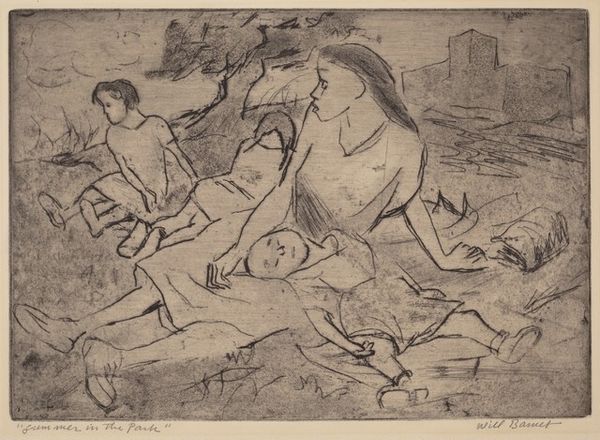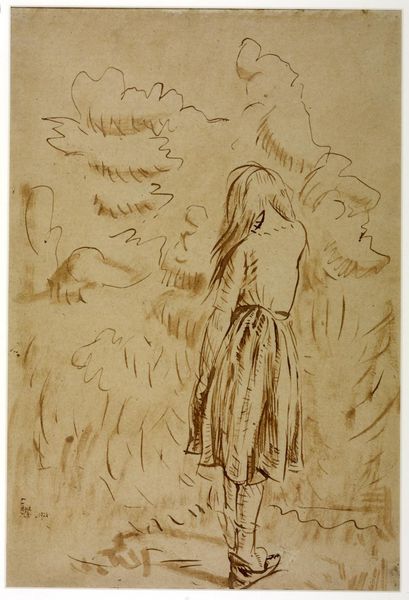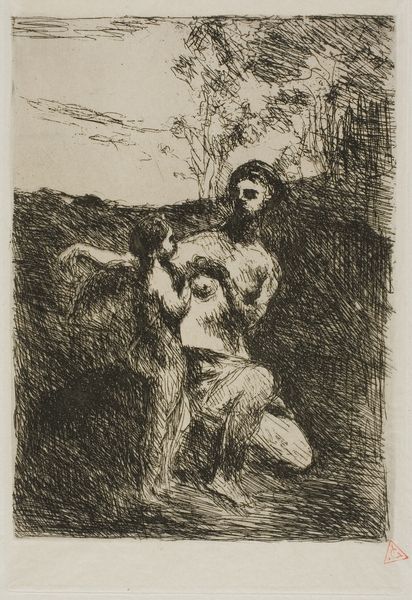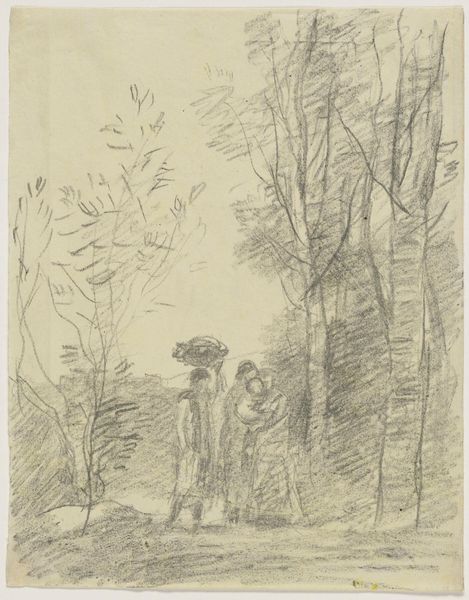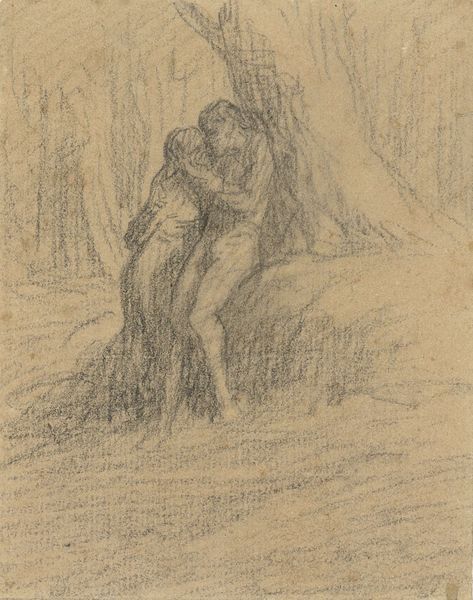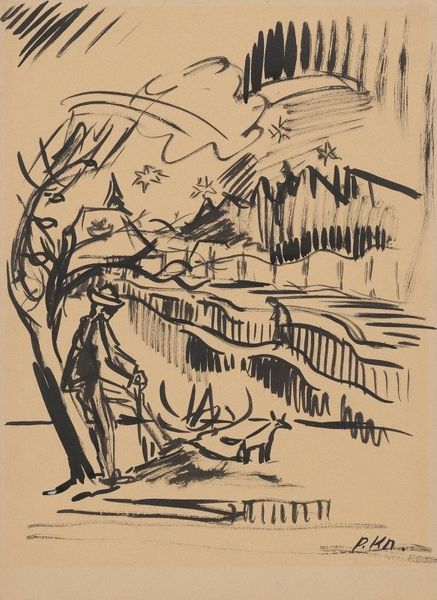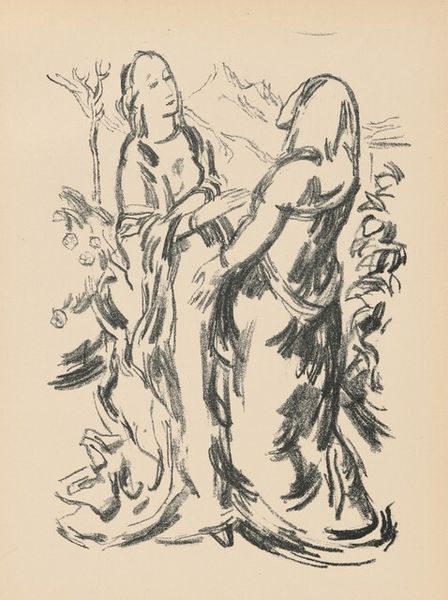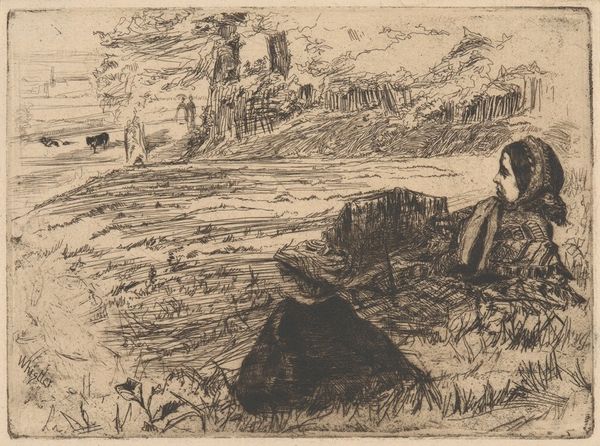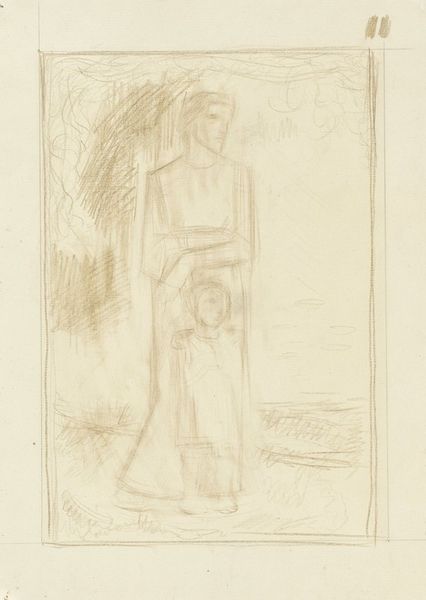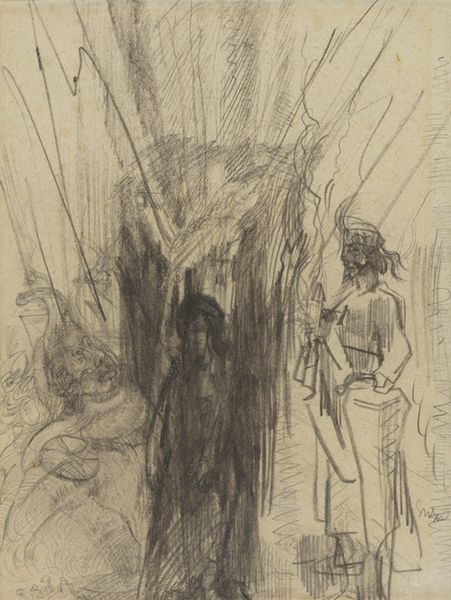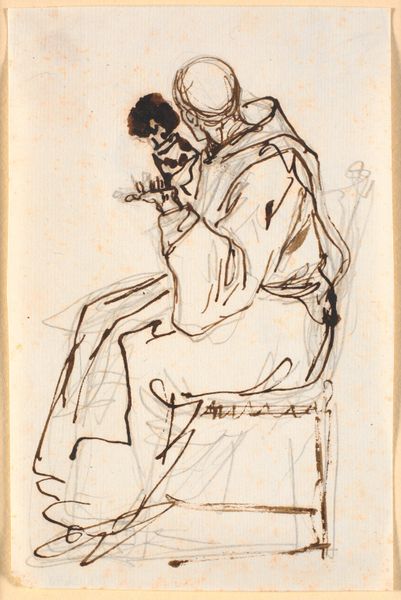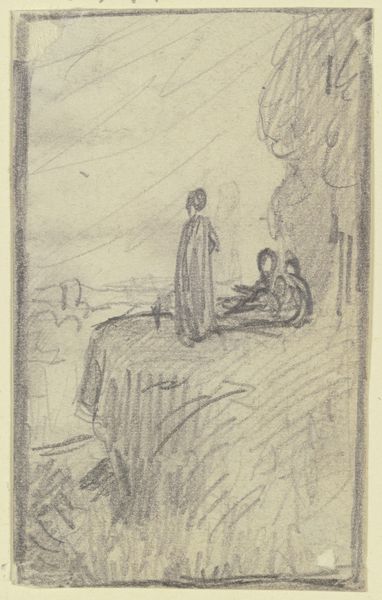
drawing
#
drawing
#
narrative-art
#
figuration
#
post-impressionism
#
nude
Copyright: Public Domain: Artvee
Editor: We’re looking at Paul Gauguin's drawing "El llamado." While the date is unknown, the figures and setting evoke his time in French Polynesia. I’m struck by its simplicity and the kind of tentative nature of the women depicted. What kind of story do you see in it? Curator: For me, the drawing reveals the complexities and ethical dilemmas within Gauguin’s post-impressionist exploration of Tahitian life. We can examine Gauguin's gaze here. How does his position as a European artist influence the representation of these indigenous women? Do you notice anything about the contrast between the clothed and unclothed figure? Editor: Yes, one woman is partially draped, while the other is nude and gesturing outwards. It's like two points of view presented, the exposed native body against modesty. Curator: Exactly. Consider the power dynamics inherent in these depictions, within the historical context of colonialism. What do we make of Gauguin appropriating the culture of an exploited society in search of artistic inspiration? How does Gauguin engage, or perhaps exploit, with the idea of the ‘primitive’ in his search for authenticity? And can we, as viewers today, unpack and challenge his narrative? Editor: It sounds like this artwork isn't just a visual image. It is an artifact deeply entwined with colonialism. Thank you! That perspective adds a whole new dimension to how I see Gauguin's work. Curator: I agree, art challenges our notions of beauty and morality.
Comments
No comments
Be the first to comment and join the conversation on the ultimate creative platform.
